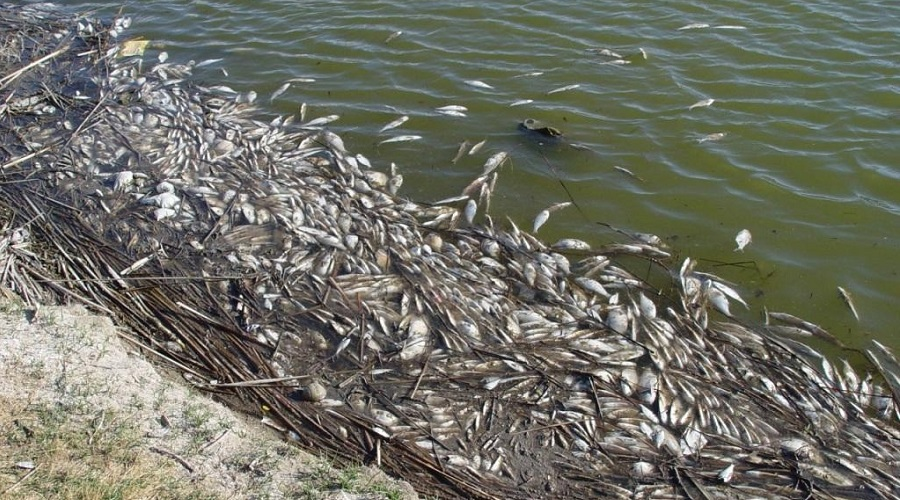
Reference image of dead fish washed ashore during a golden algae toxic bloom. Photo by Michael Hooper, USGS.
Climate change-induced droughts and fish kills affect larger fish more severely than smaller individuals, according to new research.
In a paper published in Environmental Biology of Fishes, researchers from Leiden University, Sportvisserij Zuidwest Nederland and the Sea Around Us initiative at the University of British Columbia compared evidence from drought-induced fish kills in the Netherlands, fisheries management literature and multiple physiological studies. They confirmed that when water gets warmer and deoxygenated, larger and older individuals within a species tend to die in greater numbers than their smaller and younger counterparts.
“There is usually a discrepancy between the interpretation by the authors of some laboratory studies versus fieldwork experience when it comes to explaining whether and why larger fish are more vulnerable than smaller fish to warming and deoxygenated waters,” Dr. Daniel Pauly, co-author of the study and principal investigator of the Sea Around Us initiative, said. “Resolving this discrepancy is urgently needed, as rapid climate change increases periods of drought and extreme heat worldwide and we need to understand the tolerance of fishes of different sizes to these events.”
The explanation for the increased vulnerability of larger fish is that fish gills, as two-dimensional surfaces, cannot keep up with the growth of fish’s three-dimensional bodies. Thus, larger fish have a smaller ratio of gill surface area to body mass.
Under normal conditions, this impacts only fish’s growth rate, which declines with size. However, when temperatures rise, which increases fish’s oxygen demand while the oxygen in the water simultaneously decreases, large fish are doubly challenged, and they often die, while the smaller ones survive because of their more favourable gill surface area-to-body mass ratios.
“Larger individuals, in the course of fish kills, often resort to sucking better-oxygenated surface waters and relying on metabolic mechanisms that do not require oxygen, which allow them to survive for a little bit longer, but these resources are not endless,” Pauly said. “The accelerated metabolism caused by heat and its higher oxygen demand eventually kill the larger fish”.
In contrast, in smaller and younger fish, what is known as “aerobic scope” is higher, given their larger gill surface area to body mass ratio. This leads to an ability to take in more oxygen, which is the reason why their growth is more rapid than that of larger fish; when temperatures increase, it also allows them to handle the resulting increase in oxygen demand.
“In 30 of the 35 species assessed in the different studies and field manuals that we reviewed, larger fish were explicitly reported as having less tolerance to oxygen-depleted and warm waters,” Johannes Müller, lead author of the paper and a lecturer at Leiden University, said. “In the case of the fish kills in the Netherlands, we confirmed that lack of oxygen and heat stress affected larger fish more drastically than juveniles, particularly, pike, perch and tench.”
For fish that have grown to larger sizes in cooler environments, it is even more difficult to deal with drastic increases in temperature and critical oxygen levels, as they are already near the limit of their capacity to supply the body with oxygen.
“This is why in colder places that have been warming up, some fish are not reaching anymore the maximum sizes that would be possible for their species,” Niels Houben, a consultant at sports fishing association Sportvisserij Zuidwest Nederland and co-author of the study, said.
The paper “On being the wrong size, or the role of body mass in fish kills and hypoxia exposure” was published in Environmental Biology of Fishes, doi: https://doi.org/10.1007/s10641-023-01442-w

